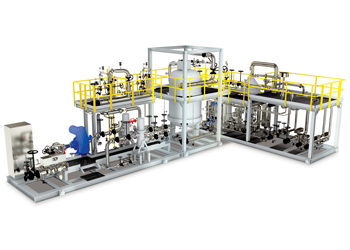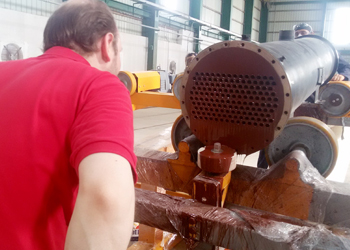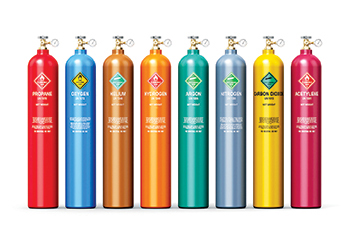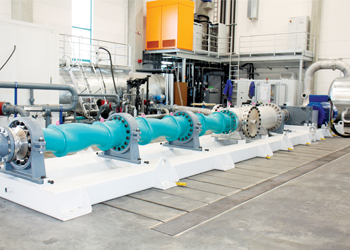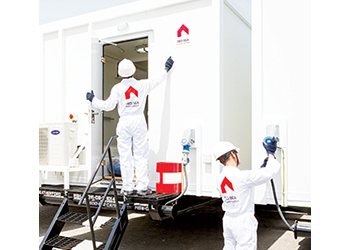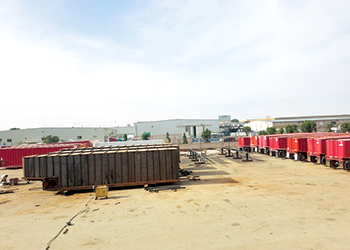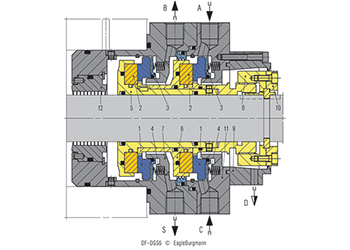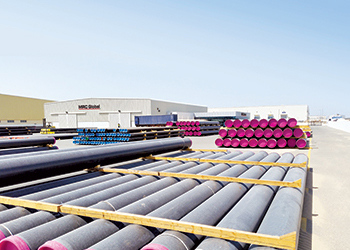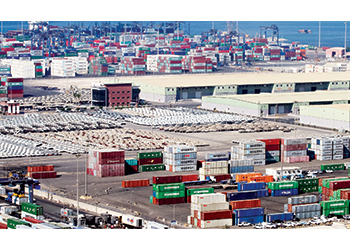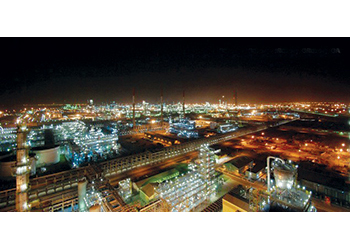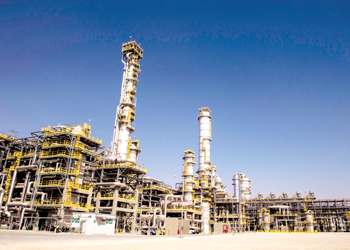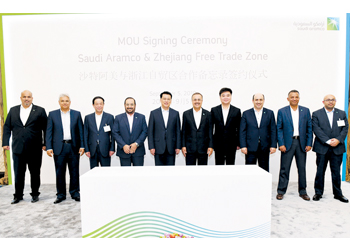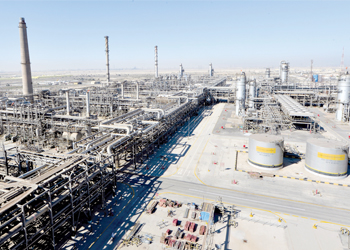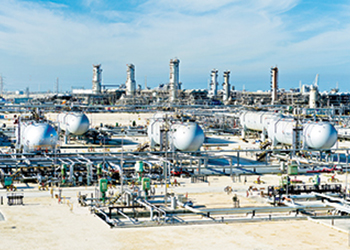
 HS-FCC arrangement
HS-FCC arrangement
Refiners are gradually assessing options to further upgrade their products into petrochemicals and more valuable chemicals by increasing conversion and implementing technologies
According to the IEA, already a major component of the global energy system, the importance of petrochemicals is continuing to grow. Demand for plastics – the most familiar group of petrochemical products – has outpaced that of all other bulk materials (such as steel, aluminum or cement), and has nearly doubled since 2000, [1].
In the Middle East, this current market trend has been well anticipated by oil and petrochemical players who rely more on chemicals and less on refining for fuels to drive future growth. Today, crude to chemicals projects are gaining momentum, according to Emilie Rousseau, Axens, Sales Development Manager, and Sophie Babusiaux, Axens, Scheme Development Technologist,.
Integrating Refining and Petrochemicals offers several advantages to the oil companies by:
• Expanding into higher growth markets with a portfolio diversification and conducting business in the coming years with flexibility and agility
• Monetizing an available and close raw material (crude oil) into products for local and export markets to get the best profitability
• Reaching the final step in chemistry by developing fine and specialty chemistry from oil along with high value chemicals business
• Mitigating risks related to raw material and product price variations
• Optimizing the overall scheme with material and heat integration and getting the most from intermediates
• Creating jobs, indirect employment and new activities in a region.
Refiners are gradually assessing options to further upgrade their products into petrochemicals and more valuable chemicals by increasing conversion and implementing technologies.
The chemical yield has always been improved over the time, from less 15 per cent before the 90s to the target of 40 per cent-80 per cent with crude to chemicals projects.
Reaching such levels requires the right and proven technology solutions to convert the low value atmospheric and vacuum residue parts.
RESID CONVERSION TO OLEFINS
The Fluid Catalytic Cracking units are converting residue fractions to light components, olefins as well as gasoline. Direct propylene production from FCC technologies is covering a third of the total worldwide propylene production.
With the basis of strong contributor to the global production of olefins, FCC technologies have evolved to tighten their operating conditions, adjust their catalyst formulation and thus go further in the production of chemicals.
HS-FCC TECHNOLOGY
Reaching unrivalled propylene yield by converting heavy hydrocarbon feedstock, the HS-FCC technology is an innovative down-flow reactor under severe FCC conditions.
This process has been co-developed with Saudi Aramco, King Fahd University of Petroleum & Minerals (KFUPM) and JXTG Nippon Oil & Energy and is licensed by Axens and TechnipFMC.
The main features of the HS-FCC process are:
• a down-flow reactor to minimize back mixing and obtain a narrower distribution of residence times;
• higher reaction temperatures (550°C to 650°C) than conventional FCC units;
• mhigh catalyst to oil ratio (C/O) enhancing contribution of catalytic cracking over thermal cracking;
• short contact time for light olefins selectivity; and
• highly selective catalyst.
The first industrial scale HS-FCC unit has been licensed by Axens and successfully started-up at the S-Oil Onsan refinery.
CC2C TECHNOLOGY
Built on the success of the proven HS-FCC technology, the innovative Catalytic Crude to Chemicals (CC2C) technology is under way.
In January 2019, Saudi Aramco, through its wholly-owned subsidiary Saudi Aramco Technologies, signed a Joint Development and Collaboration Agreement (JDCA) with Axens and TechnipFMC to accelerate the development and commercialization of the company’s CC2C technology.
This technology has the potential to significantly increase the efficiency and yield of chemicals production, converting more than 60 per cent of a barrel of crude oil into chemicals.
The agreement aims to achieve commercial readiness for the CC2C technology by 2021.
RESID CONVERSION TO NAPHTHA
To get the most from the crude feedstock and especially from the residue part, the challenge lies in conversion to push toward naphtha.
Why naphtha cut is key in a crude to chemicals project?
Naphtha represents the gearing effect in a refining and petrochemical site as, the light naphtha can be sent then to a steam cracker whereas the heavy part can be processed in the aromatic complex.
In a refinery, the straight-run naphtha is directly available after the crude distillation unit combined with a hydroprocessing treatment. To improve the balance towards naphtha, the stakes are so on the conversion naphtha that comes either naphtha from thermal cracking such as coker unit and even FCC unit or from different upgrading units such as:
• Diesel and Vacuum Gasoil (VGO) Hydrocracker (HyK) units, especially in maximum selectivity towards naphtha production
• Resid Hydrocracker units with high conversion ebullated-bed units
A great number of the latest Oil-to-Chemicals projects worldwide are based on the ebullated-bed hydrocracker H-Oil coupled with Diesel and VGO HyK technolologies licensed by Axens which stands for the heart of the conversion in these schemes, converting the most refractory and the lowest value cut, the vacuum residue, towards naphtha and Distillate. The full conversion of the Middle Distillate and VGO in the hydrocracker section sustains the strategic naphtha intermediate cut for olefins/aromatics production.
AXENS H-OIL PROCESS
 |
The ebullated-bed H-Oil reactor scheme licensed by Axens |
Naphtha from H-Oil, as key component in crude to chemicals scheme, is an excellent feed for reformer after pre-treatment. It is also a feedstock for Steam cracker unit for olefins
application.
The key features of the H-Oil technology are the following:
• Demonstrated high conversion levels: the conversion of vacuum residue is set between 75 wt per cent and 95 wt per cent when production of a stable residual fuel oil is desired from the unconverted residue. Different leverages like LHSV, use of dispersed catalyst, are used to maximize conversion;
• No limitation on feed properties;
• Mature and reliable technology more than 1 mbpsd licensed capacity;
• High availability> 96 per cent; and
• 2 new H-Oil units high conversion starting-up in 2019.
Additional conversion up to ultimate VR conversion is added to the H-Oil unit thanks to Unconverted Oil from the H-Oil processed in an Solvent DeAsphalting Unit (SDA) (H-Oil +). This section removes asphaltenes from the unconverted oil giving significant gains in OPEX thanks to hydrogen and/or energy production from pitch valuation. Overall naphtha production is maximized by sending the Deasphalted oil (DAO) with the Middle Distillate and VGO to a hydrocracker unit.
The innovative technology features are gaining wide acceptance in the industry. Many of these features have expanded the slate of heavy crudes that can be processed in an H-Oil unit.
TAKE-AWAYS
The petrochemicals demand growth higher than that of fuels. Crude to chemicals complexes offer many advantages such as expanding into higher growth markets, mitigating risks related to naphtha material and product price variations and improving asset profitability. For both the olefins route and the naphtha route, technologies benefit of continuous improvement and innovation in order to provide the maximum of services and productivities.
Crude to chemicals projects implementing advanced technologies is a way to catch these opportunities.
"Axens is your key partner to provide advanced and innovative solutions for word class projects, both grassroots and revamps," the authors say.
HS-FCC™, HyK™ and H-Oil® are trademarks owned by Axens.
[1] The Future of Petrochemicals – Towards more sustainable plastics and fertilizers – OECD/IEA 2018













































































